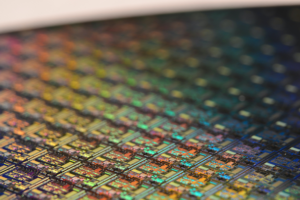The corporate world has never been short of buzz words. And whilst many come and go, one of the current hot terms in technology is proving to be a keeper. The phrase in question? Modern Desktop and if you haven’t embraced it yet then now is the time to do so.
So, what does modern desktop mean? The term was coined to reflect a shift in the way staff work. This shift has been heavily influenced by evolving technology and specifically the evolution of Microsoft Office into Microsoft 365. But beyond the technology, modern desktop is a contemporary, holistic approach to business.
At DBT, we define modern desktop as a philosophy that integrates Cloud technology, compliance, security and collaboration.
What’s the appeal to business owners?
For business owners, the primary attraction of moving to modern desktop is the increased security it offers. A Cloud-based infrastructure has a significantly higher security capability, from both external and internal threats. According to the FBI, global financial losses caused by compromising business emails between 2013 – 2018 amassed an incredible $12.5 billion USD, more than $18 billion AUD.
With cybercrime so rife amongst businesses, it is obvious that you would want to take every precaution to protect your data. Modern desktop technology has been designed to better cater to legislation like the Notifiable Data Breach (NDB) scheme and the General Data Protection Regulation (GDPR).
What’s the appeal to the end user?
For the end user, Modern Desktop offers improved collaboration opportunities. Applications like Microsoft Teams allow for chat, file sharing and video conferencing all in one place. This allows staff to connect in real time regardless of their location. Teams also integrates with the full Microsoft 365 suite of products and an increasing catalogue of third-party programmes.
With files saved in SharePoint, staff can hold a meeting via Teams, edit a document in real time and resolve any issues or concerns without the need for endless emails. In a nutshell, a modern desktop offers businesses unmatched mobility and staff gain access to information at their fingertips, whenever and wherever they need it.
Popular modern desktop tools
Many modern desktop tools will already be familiar to staff and businesses as stand alone solutions. For example, Microsoft Outlook is a modern desktop tool but only when it is integrated with other Microsoft 365 tools.
The most popular modern desktop tool at present is Microsoft Teams. In November 2019, Microsoft reported that Teams now has in excess of 20 million daily active users. Microsoft Teams’ popularity is arguably due to the integration it offers. When correctly configured, Microsoft Teams is the glue that binds all other modern desktop tools together.
Other popular modern desktop tools include:
- Microsoft Planner
- Microsoft Flow
- SharePoint / OneDrive
- Slack
- OneNote
- Asana
- Auto Pilot
These are just a few of the integration opportunities in Microsoft Teams, the options are extensive, and the best fit will generally depend on business structure and preference.
How do you become a modern desktop?
The process of transforming your business into modern desktop varies depending on the current infrastructure, software and systems in use. To transition your business, you will need to undertake the following steps:
- Identify the current state of your data, where is it and in what format?
- What security measures do you currently have in place?
- What server configuration is in place, have you started / completed a Cloud migration?
- Cleanse all data and shift to SharePoint
- Configure security
- Provide training to end-users on any new programs
A modern desktop transformation requires technical expertise to ensure all elements are correctly configured and optimised. If you do not have specialised inhouse modern desktop experts, it is wise to identify a subject matter expert to partner with.
About Dynamic Business Technology
Dynamic Business Technology (DBT) has been providing expert IT support and advice for more than a decade. With offices in Newcastle, NSW and regional Victoria, we offer a raft of IT services including modern desktop transformation.
DBT is an experienced and trusted IT partner with a focus on collaboration, communication and strategy.
If you would like to know more about how your business would benefit from embracing modern desktop, contact the team at DBT today.



